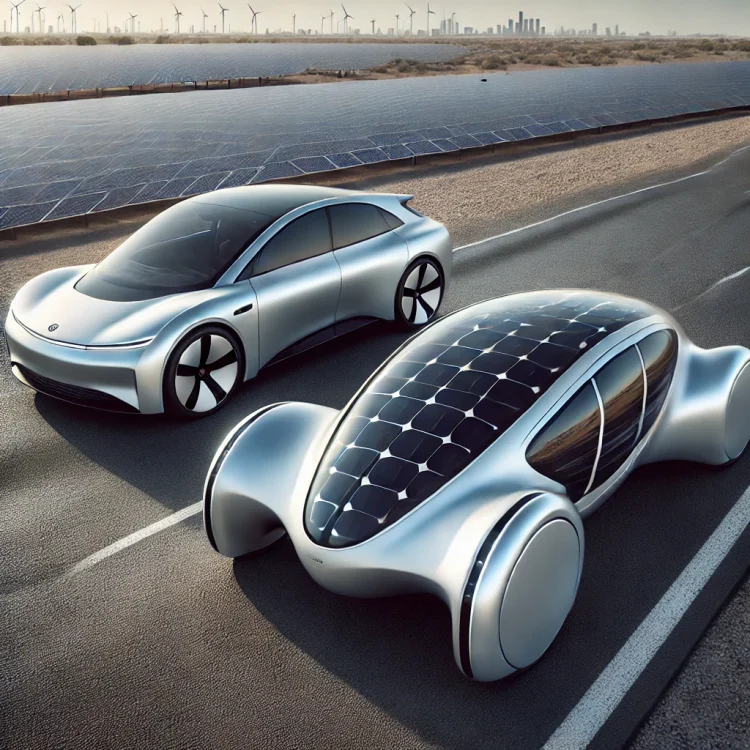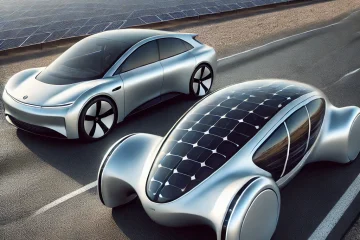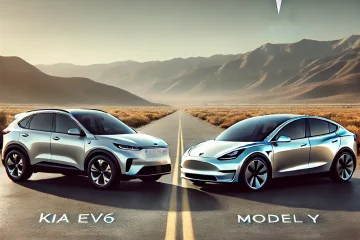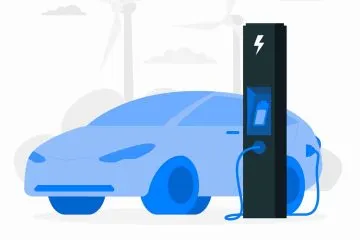Light Year 2 and Aptera Review: A Comprehensive Solar Car review

Light Year 2 and Aptera Review
- Lightyear is a Dutch company that launched the Lightyear 0 as a limited-edition, high-priced model and has since shifted focus to the more affordable Lightyear 2.
- Key Feature: The Lightyear 2 uses a combination of solar panels and a battery system, allowing it to charge while parked or in motion, extending its range without relying heavily on charging stations.
- Expected Range: Around 500 miles with solar charging extending range by up to 40 miles per day in optimal conditions.
- Pricing: Targeted to be affordable compared to other EVs, around $40,000.
2. Aptera:
- Aptera is a California-based startup developing a highly aerodynamic, three-wheeled solar vehicle designed for maximum efficiency.
- Key Feature: The Aptera is covered in solar panels and can reportedly generate up to 40 miles per day solely from solar power, making it ideal for short commutes without any charging.
- Expected Range: Available in multiple configurations, with the top model offering up to 1,000 miles on a single charge.
- Pricing: Expected between $25,000 and $50,000 depending on configuration, with the most affordable models focusing on maximizing solar usage.
How Solar Cars Work
These vehicles use integrated solar panels on the roof, hood, and trunk to capture sunlight and convert it into electricity. The electricity is stored in a battery to power the motor, just like a conventional EV. Solar-powered cars can also be plugged into traditional EV charging stations for faster charging.
Advantages of Solar Cars:
- Extended Range: Solar panels can add up to 30-40 miles of daily range in sunny climates, reducing dependency on chargers.
- Lower Operating Costs: With self-charging capabilities, owners can save on electricity and fuel, making these cars incredibly cost-effective over time.
- Environmentally Friendly: Solar cars produce zero emissions and are energy-independent, making them a green choice.
Challenges:
- Weather Dependency: Solar efficiency depends on sunny weather, so range extension can be minimal on cloudy days.
- Battery Size Limitations: Solar panels alone cannot yet power a vehicle fully over long distances, so the battery must support the bulk of energy needs.
- Panel Durability: Solar panels on cars are exposed to wear and tear, weather, and potential damage, raising concerns about maintenance and long-term durability.
Notable Features of Fully Solar Cars
- High-Efficiency Design: These cars emphasize aerodynamic designs to minimize drag and maximize range.
- Low Weight: Built with lightweight materials to increase efficiency and extend range, as with the Aptera’s three-wheeled, low-weight structure.
- Range Boost from Solar: Depending on location and weather, drivers may see between 20-40 miles of additional daily range purely from solar power.
- Off-Grid Capability: These cars are ideal for regions with limited EV infrastructure, as they can self-charge in sunny locations.
- Smart Energy Management: Many solar cars have intelligent systems to manage energy distribution, optimize solar use, and integrate with battery power as needed.
Current Market and Future Outlook
Solar cars are still a niche but promising market, with Lightyear and Aptera leading the way. These vehicles may revolutionize transportation, especially for short commutes, rural areas, and eco-conscious drivers. However, widespread adoption will depend on improving solar efficiency, durability, and affordability.
Pros and Cons Summary
| Pros | Cons |
|---|---|
| Environmentally friendly, zero emissions | Weather-dependent charging |
| Extended range through solar charging | Limited to 20-40 miles/day in ideal conditions |
| Cost-effective operation, less reliance on grid | Higher upfront costs than standard EVs |
| Ideal for short commutes and off-grid areas | Requires large battery for long-distance travel |
| Lightweight, aerodynamic design for efficiency | Potential maintenance needs for solar panels |
Lightyear 2
- Expected Release Date: Lightyear has announced plans to launch the Lightyear 2 by the end of 2025, initially targeting markets in the USA, UK, and EU.
- Key Features:
- Solar Integration: Equipped with integrated solar panels, the Lightyear 2 can harness solar energy to extend its driving range, potentially adding up to 40 miles per day under optimal conditions.
- Driving Range: The vehicle aims to offer over 500 miles of range on a single charge, combining battery and solar power.
- Pricing: The Lightyear 2 is expected to start at a base price of €40,000, making it more accessible compared to its predecessor, the Lightyear 0.
Aptera
- Expected Release Date: Aptera Motors has set a goal to begin production by the end of 2023. However, the delivery timeline is funding-dependent, and the company plans to provide more accurate timelines upon meeting its fundraising objectives.
- Key Features:
- Solar Capability: Aptera’s design allows it to travel up to 40 miles per day solely on solar power, making it ideal for daily commutes without the need for external charging.
- Driving Range: Depending on the configuration, Aptera offers a range of up to 1,000 miles on a full charge, combining battery and solar energy.
- Design and Efficiency: The vehicle features an aerodynamic, ultralight bodywork, contributing to its high efficiency and unique three-wheeled design.
Crucial Information
- Production and Funding: Both companies are in the pre-production phase and are actively seeking funding to commence mass production. Aptera, for instance, has indicated that its production timeline is contingent upon securing necessary funds.
- Market Impact: These vehicles represent a significant advancement in sustainable transportation, offering extended ranges and reduced reliance on traditional charging infrastructure through solar integration.
- Reservations and Interest: Both companies have opened waitlists or reservation systems, indicating strong consumer interest. For example, Lightyear has already received substantial pre-orders from international leasing and ride-sharing partners.
As the automotive industry continues to evolve towards sustainability, the Lightyear 2 and Aptera stand out as promising contenders in the SEV market, offering innovative solutions for eco-conscious consumers.













No Comment